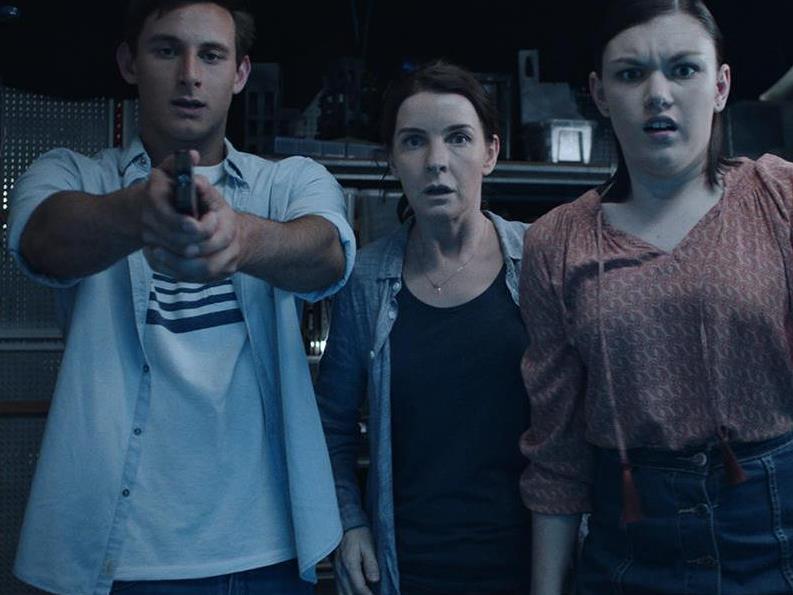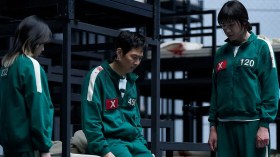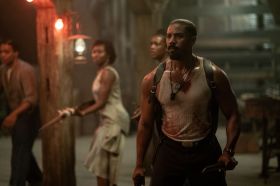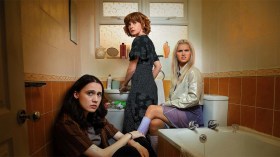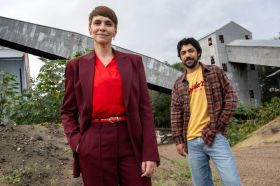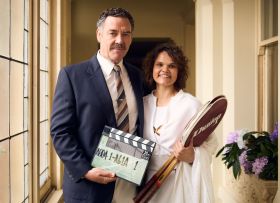John V. Soto’s The Gateway.
Science fiction’s penchant for parallel realms ranks among the genre’s most intriguing obsessions, but it has one downfall: no matter how many different worlds sci-fi creators conjure up, their audience still resides in one single universe. Books and movies can ask inquisitive minds to ponder alternative realities playing out at the same time as their own; however they can’t make viewers and readers forget the wealth of other material that has contemplated the same subject. It’s these comparable fictional worlds that blight John V. Soto’s The Gateway, with the Crush, Needle and The Reckoning filmmaker’s fourth feature standing in the shadow of its genre predecessors. While his latest effort is co-scripted with author Michael White – a former science editor and lecturer turned novelist and biographer – it less resembles a new take on the concept, and more a compilation of previously seen ideas.
Both text on-screen and heavy-handed sound bites explain The Gateway’s specific theory of interest: the many interacting worlds hypothesis. The train of thought proposes that parallel dimensions not only exist, but that they interact with each other – and while it isn’t particle physicist Jane Chandler’s (Jacqueline McKenzie, TV’s Safe Harbour) primary field of interest, she’s still listening to lectures on the topic. Her timing really couldn’t be better, with her overdue project exploring teleportation suddenly opening a portal into another universe. Instead of sending an apple from one point to another within the same room, she sends it to a world that seems much like her own. Further, when her husband Matt (Myles Pollard, Jasper Jones) is killed unexpectedly, Jane begins to wonder what else could make the jump between realms.
From The Fly’s teleportation gone wrong to Pet Sematary’s resurrections to Rick and Morty’s inter-dimensional antics – and The Cloverfield Paradox’s recent exploration of alternate timelines and grieving, too – The Gateway not-so-boldly goes where plenty of others have gone before. Soto and White mightn’t have taken direct inspiration from any or all of the above, or from the considerable array of other fare that has also hopped between multiple universes, but their film fails to carve out its own space alongside its forebears. Instead, it offers up familiar elements that can’t escape their derivative nature, with a few twists that remain easily foreseeable, all packaged up with plenty of pointless science chatter about petawatts. In fact, the film itself uses its sci-fi premise to dress up what ultimately becomes an otherwise straightforward picture of domestic disharmony, as seen when Jane’s reunion with Matt goes awry.
Alas, the interpersonal dynamics also fall short; here, an unremarkable movie gets largely unremarkable performances to match. Rather than presenting well-rounded characters grappling with meaty emotions and science-fiction notions, The Gateway is filled with portrayals that serve the script but barely flesh out its various players beyond their purpose in the narrative. As the determined heroine, McKenzie is the exception, even if her ability to convey Jane’s inner conflict is often compromised by the screenplay’s lack of subtlety. The absence of nuance also trips up the rest of the cast, though Ben Mortley’s (Zelos) turn as a scientist sidekick makes more of an impact than Pollard’s segue from doting husband to possible threat, or Shannon Berry (Romper Stomper) and Ryan Panizza’s parts as the Chandlers’ mostly unexpressive teenage children.
Rather than its story or its performances, employing suburban Perth as the film’s setting proves The Gateway’s strongest asset. The location might fit the Western Australia-based Soto’s pattern and also suit his low budget, but the city’s sense of vastness is well-deployed in a movie where space is infinite. Accordingly, roaming around ordinary yet sparsely populated neighbourhoods helps turn the open and bland into the bleak and menacing – and gives cinematographer David Le May (The Legend of Gavin Tanner) a better opportunity to craft a selection of interesting shots than afforded by the feature’s interior scenes. Indeed, The Gateway is at its worst when it is stuck in Jane’s low-rent lab, where the film’s by-the-numbers tale is as dull as its unconvincing surroundings.
Rating: ★★
The Gateway
Director: John V. Soto
Australia, 2017, 90 mins
Release date: 3 May 2018
Distributor: Rialto
Rated: M
Actors:
Director:
Format:
Country:
Release:
